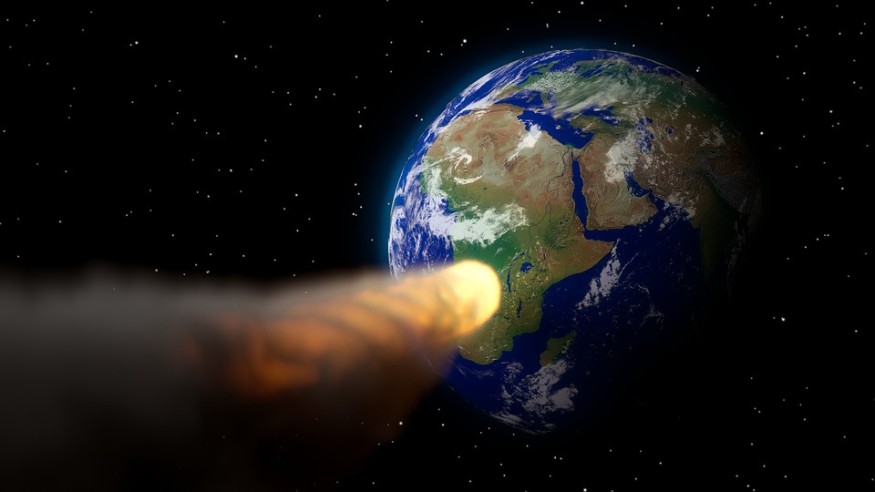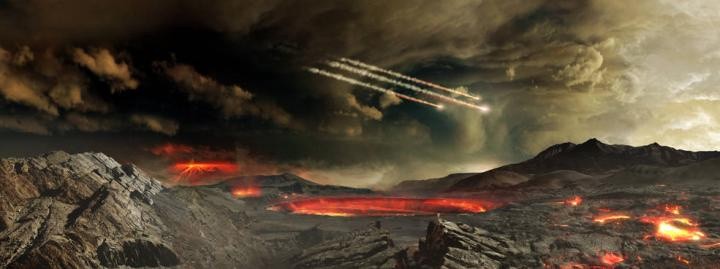Evidence of an asteroid impact crater is under the North Atlantic Ocean. The discovery could make scientists reevaluate how the era of dinosaurs came to an end.

Discovering the Crater
Scientists have discovered a giant asteroid crater under the Earth's surface. The crater was created by an asteroid collision 66 million years ago.
A report on the discovery was co-authored by Veronica Bray, a research scientist at the University of Arizona Lunar and Planetary Laboratory. She focuses on craters that may be found all around the solar system.
Nadir Crater
The Nadir crater, named after a neighboring seamount, is located approximately 250 miles (400 km) off the coast of Guinea, West Africa, and is submerged up to 1,300 feet (400 meters) below the seabed. The study team hypothesizes that the asteroid that generated the recently found Nadir crater may have originated from a swarm of asteroids at that time or from the fragmentation of a parent asteroid. Less than 20 marine impact craters have been identified on Earth, and if verified, the crater will be one of them.
Based on Bray's simulation, the asteroid collision could have produced a tsunami over 3,000 feet high in addition to an earthquake greater than magnitude 6.5 has been simulated. The impact would have significantly added to the local destruction, albeit less than the Chicxulub impact's worldwide tragedy.
Further Data

The asteroid could be as large as Bennu, the object of OSIRIS-REx, he said in an email to Space.com readers.
These are preliminary simulations, and they will need to be improved once we have more data. Still, according to Bray, they offer vital new information on the potential ocean depths in this area at the time of impact.
Uisdean Nicholson, a geologist at Heriot-Watt University in Edinburgh, found the crater accidentally. During a study on seafloor spreading, the geological process that caused the African and American continents to migrate apart and expose the Atlantic Ocean, he looked at seismic reflection data from the bottom.
The scientist continued the highly disordered sedimentary formations that stretch for tens of kilometers outside of the crater appear to be ejecta as well. "The traits are incompatible with other crater-forming processes like salt withdrawal or the eruption of a volcano," says the author.
According to research co-author and impact specialist Sean Gulick of the University of Texas at Austin, "The Nadir Crater is a very intriguing discovery of a second impact close in time to the Cretaceous-Paleogene extinction." Even though it is far smaller than the Chicxulub impactor, which caused the extinction, its existence compels researchers to look into the potential of an impact cluster during the most recent Cretaceous.
Understanding the Study
The Cretaceous-Paleogene boundary, a geological layer that marks the end of the Cretaceous epoch and the final known appearance of dinosaurs, is believed to match with the layers that were hit by the asteroid, according to seismic data. However, the precision of the data places certain restrictions on the exact effect time.
Only 200 impactors have been found, despite impactors having battered the Earth for 4 billion years, Gulick added. Thus, it is great news if a new potential influence is identified, especially in the challenging maritime environment.
Nicholson has already applied for financing to dig into the seafloor to establish that it is an asteroid impact crater and determine its exact age.
For more Space news, don't forget to follow Nature World News!
© 2025 NatureWorldNews.com All rights reserved. Do not reproduce without permission.





